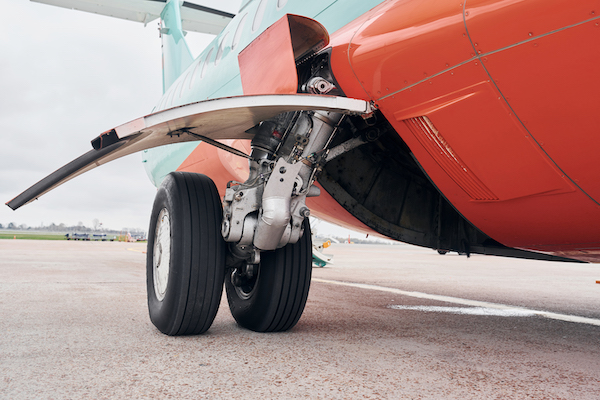Hydraulic Pump Body in Aircraft
The hydraulic pump body in aircraft generates the necessary pressure to provide power. Generally, an aircraft’s hydraulic system uses a fluid under pressure to move various components. Since almost all aircraft benefit from some hydraulically operated components, these systems are extremely important. In our content, we have compiled answers to many questions such as what are hydraulic systems and what is the function of a hydraulic pump.
Hydraulic Systems in Aviation
To start from the basics, let’s first understand what hydraulics is. This term refers to machines operating with water or another fluid pressure and also denotes the science and technology studying the laws applied to water flow. In aircraft, hydraulic systems take advantage of the properties of fluids and enable the performance of various tasks that human speed cannot achieve. In other words, movement and force are provided with the help of fluids. These systems use hydraulic fluid to transmit power from the aircraft engines to its components. This fluid is pressurized to activate various aircraft systems, thereby affecting system performance. Therefore, choosing the correct hydraulic fluid is necessary for the optimum performance and longevity of aircraft hydraulic systems. One of the most critical functions of hydraulic systems in aircraft is to raise and lower the landing gear. The landing gear is a complicated system requiring significant power. Hydraulic systems generally provide this power, allowing the landing gear to rise and lower quickly and efficiently. Without this, a successful landing would be impossible.
What are the advantages offered by these systems?
As mentioned above, they are primarily required for a successful and safe landing. They also provide benefits in terms of flaps and brakes that slow down the aircraft during landing. Additionally, hydraulic systems operate safely under extreme conditions such as high altitudes and low temperatures. What are the main parts of the hydraulic system used in aircraft? The basic components include the pump, reservoir, cylinder, and heat exchanger. Among these, the hydraulic pump body generates the necessary pressure. Thanks to this pressure, various movable parts in the aircraft operate effectively. Additionally, hydraulic pumps play an effective role in converting energy into mechanical motion, increasing energy efficiency and possibly reducing fuel consumption. Moreover, sealing is a very important requirement in hydraulic systems. Hydraulic pump bodies also offer superior sealing capacities.
The Importance of Hydraulic Pump Body for Aircraft
Why are these components so important within hydraulic systems? There are various explanations for this in terms of safety, comfort, and efficiency. Below, you can find the importance of the hydraulic pump body from different perspectives:
- The hydraulic pump body establishes the necessary pressure for the effective operation of various parts in the aircraft.
- Efficient and appropriate pump design can reduce fuel consumption and increase efficiency.
- Leaks in hydraulic systems can lead to performance loss and potential safety risks. However, the hydraulic pump body can provide excellent sealing properties, maintaining the system’s integrity.
- Their adaptability to different aircraft models also provides advantages in terms of pump usage.
In general, hydraulic pump bodies directly affect the performance, safety, and operational efficiency of the aircraft.
How is a Hydraulic Pump Body Manufactured?
The production process has many stages, which can be divided into two main subcategories: material selection and production steps. In material selection, cast iron, steel alloys, and aluminum alloys stand out. For example, cast iron material offers superior strength and successful sealing capabilities, which are important attributes for pump bodies. Steel alloys are valued in the manufacturing process as they are preferred for applications requiring excellent durability and corrosion resistance under high pressure. Lastly, aluminum alloy is chosen for its high corrosion resistance among other features.
The production steps can be outlined in seven stages, which you can find below:
- Design and Engineering: CAD (Computer-Aided Design) software is used in the design of the hydraulic pump body. In addition, material selection, dimensions, performance, efficiency, and many other criteria play a role in the design.
- Material Preparation: This step involves preparing the materials selected according to various criteria to ensure they are suitable for the manufacture of the pump body.
- Casting or Machining: If the casting method is used, cast iron or aluminum alloys may be preferred. In CNC machining methods, steel alloys or aluminum alloys are highlighted.
- Heat Treatment: Heat treatment involves planned – controlled heating and cooling processes applied to solid metal or alloys. Therefore, heat treatment may be applied to the selected material for the pump body if necessary.
- Surface Treatments: This process is applied to increase corrosion resistance or reduce surface roughness.
- Assembly & Testing: The hydraulic pump body is integrated into other hydraulic systems, and the assembly is completed. Processes such as seal and performance tests are applied to the part.
- Quality Control: Finally, compliance with quality standards and design specifications is determined.

